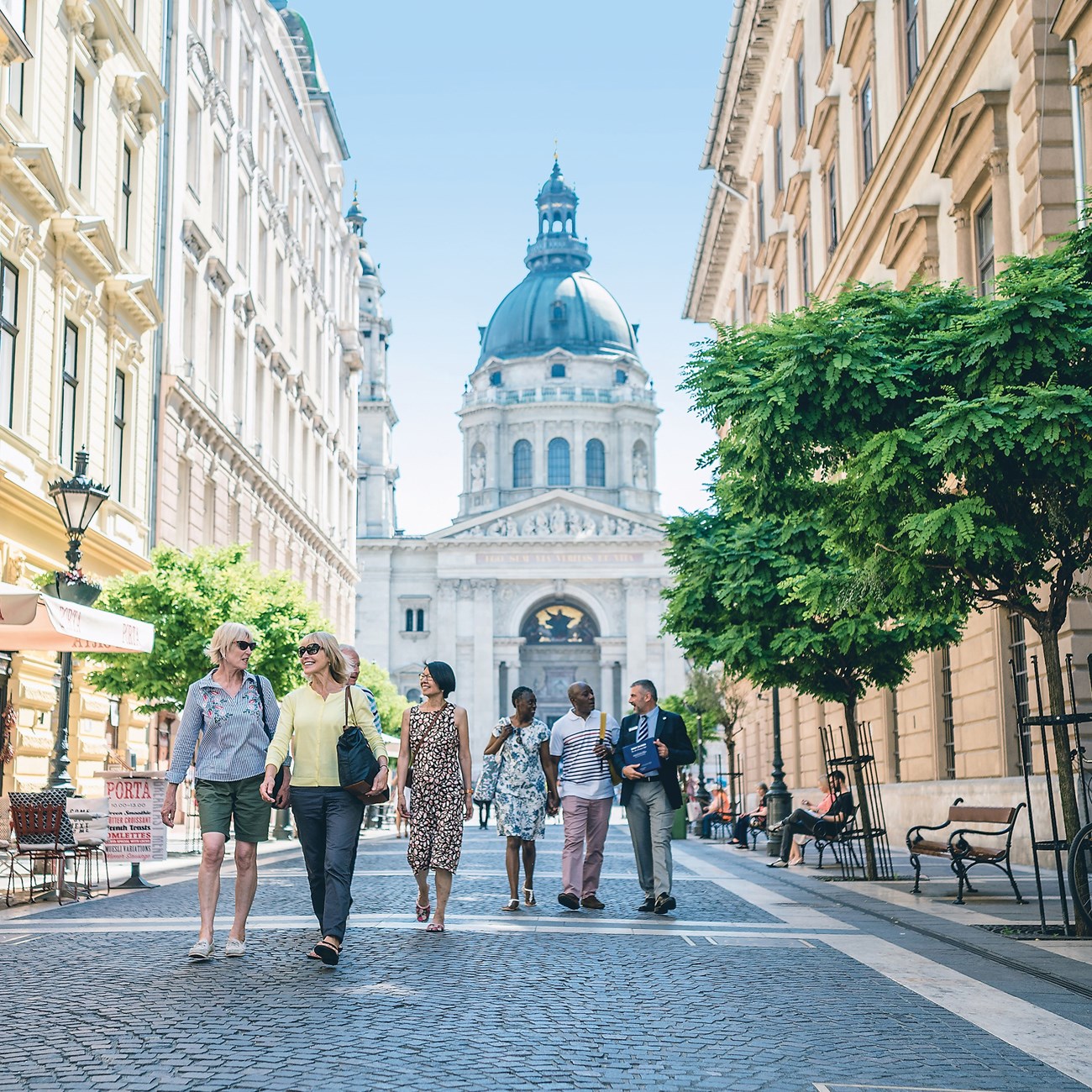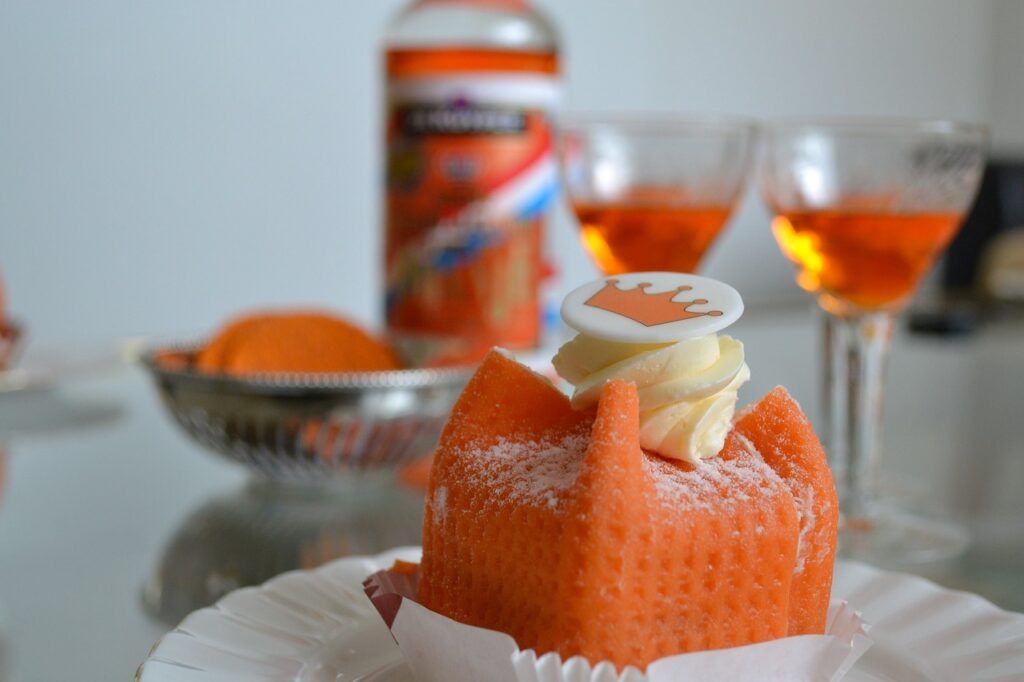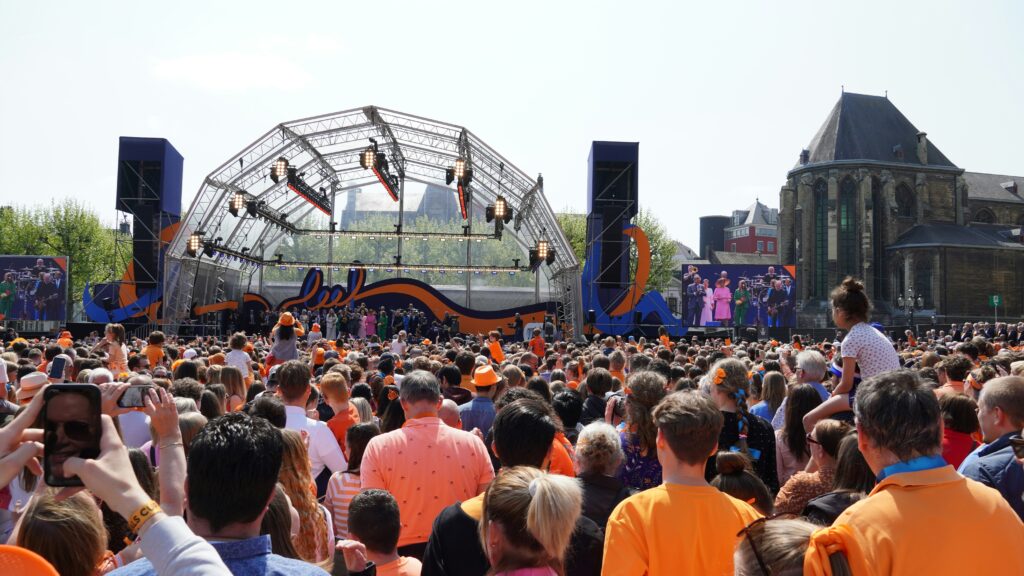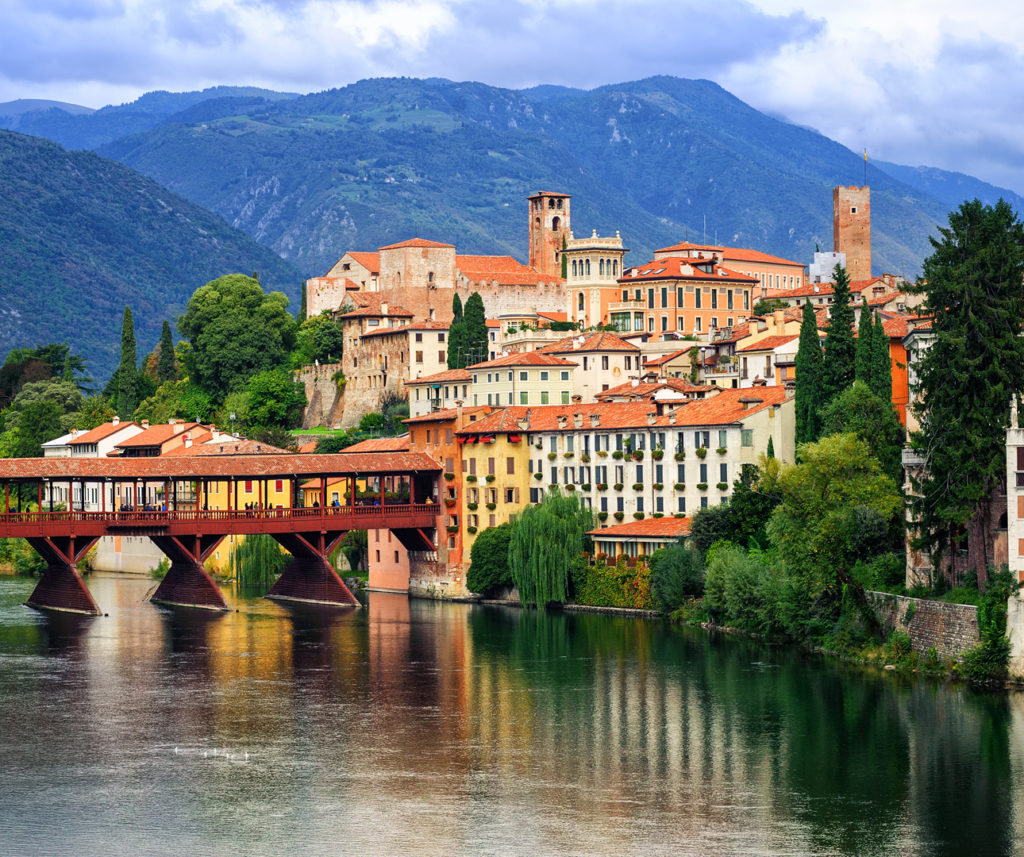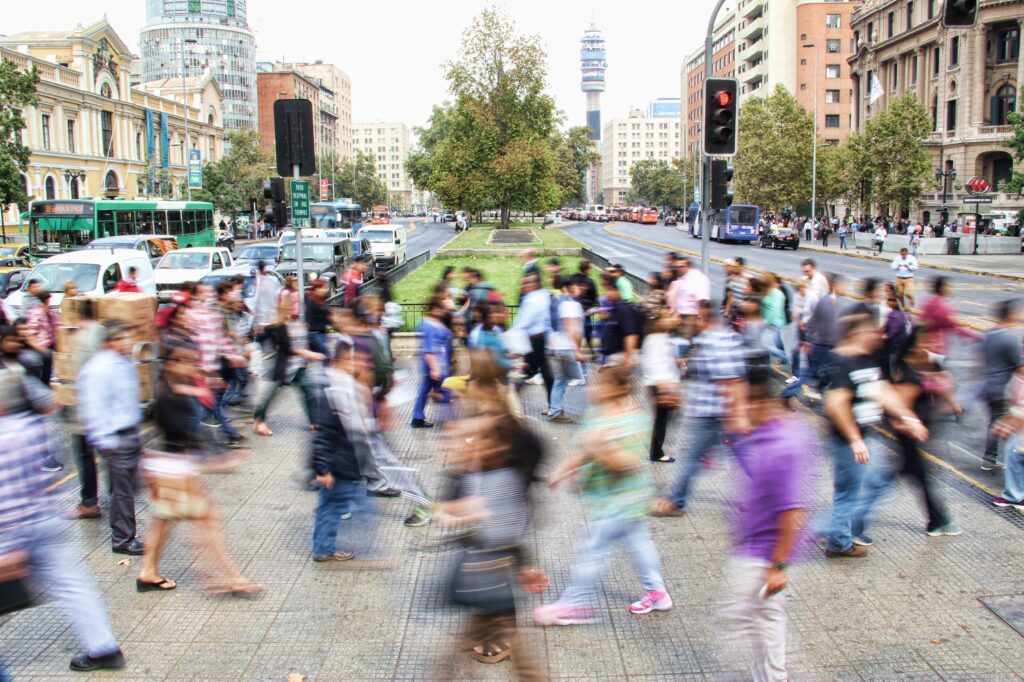King’s Day in Amsterdam: A Colorful Celebration of Dutch Culture
On the 27th April every year, King’s Day is celebrated in the Netherlands. A festive extravaganza honoring the Dutch monarchy and unity among citizens, it’s an experience not to be missed. This vibrant festival, marked by streets awash in orange, is no more visible than in the capital Amsterdam. Crowds flood the streets, and the city is alive with lively street performances and boat parties along the canals.
To learn more, we spoke to Travel Director and Amsterdam expert Frank. From bustling street markets teeming with entrepreneurial youngsters to energetic parties echoing with music, he talks us through the history and traditions of the national holiday of King’s Day and shares his top tips for enjoying this great event.
For travel inspiration, here’s everything you need of know for a Netherlands guided tour
A joyful day of celebrations
“King’s Day is a fantastic occasion and is a great advert for the country,” says Dutch national Frank, who has been leading Insight tours through Amsterdam, the Netherlands and Europe since 1993. “To be together with the Dutch in the sea of orange color is quite memorable. It’s very welcoming for visitors and you’ll see lots of happy people.”
While most people see it as a day to let-loose and enjoy themselves, King’s Day is still technically a celebration of the monarchy. It’s also a testament to the Dutch spirit of togetherness and community, as people from all walks of life and ages come together to celebrate.
King’s Day originally started with a Queen
“It all began at the end of the 19th century when Princess Wilhelmina was born,” Frank tells us. “Initially celebrated as Princess’s Day for the first time on 31 August 1885, to mark her fifth birthday. Then in 1890 when Whilemena ascended to the throne aged 10 it became Queen’s Day and an official National Day of Celebration.
“In 1949, Queen Wilhelmina abdicated, giving the throne to her daughter Juliana. Queen’s Day then switched to the famous date 30th of April, the date Juliana was born. When Queen Juliana abdicated in 1980 and Beatrix, her daughter, took over she chose for the celebration to remain on that date 30th of April.”
From the mid-1950s, the event was also televised. Under Queen Juliana, it gradually became the custom for everyone to have a day off on 30 April, which ultimately became an official public holiday signifying national unity.
Historically it was a day for children
In the past, when Queen’s Day was celebrated on August 31st, coinciding with the end of the school summer break, it quickly became a beloved day of festivities for children.
“I remember as a child that Juliana, her late husband Prince Bernhard and the children were all standing on a podium in front of Soestdijk Palace,” Frank tells us. “The people were passing by with music and they gave flowers, and across the whole country we had festivities for children.
“So, it was particularly a children’s day. In every Market Square you could see festivities for children. They would sell secondhand stuff and, if one of the children could sing, they did a performance and they make some pocket money.”
In 2014 Queen’s Day became Kings Day and moved to 27 April
In 2014, King Willem-Alexander ascended the throne, becoming the first Dutch king in over a century. This marked the transition to King’s Day and the event we know today, now celebrated on April 27th in honor of his birthday.
“Though there always were festivities, the scale you see today, and the international interest is a fairly recent development, post millennium,” says Frank. “For the Dutch people it is a celebration of the birthday of our monarch, but the party has become wilder.
“Nowadays you have concerts, large street parties and people celebrating on the canal boats and they dress in orange. You see streams of young people emerging with orange flags, hats and jerseys and there is more music and merriment in the streets. The festivities actually start at midnight on the 26th, known as King’s night.”
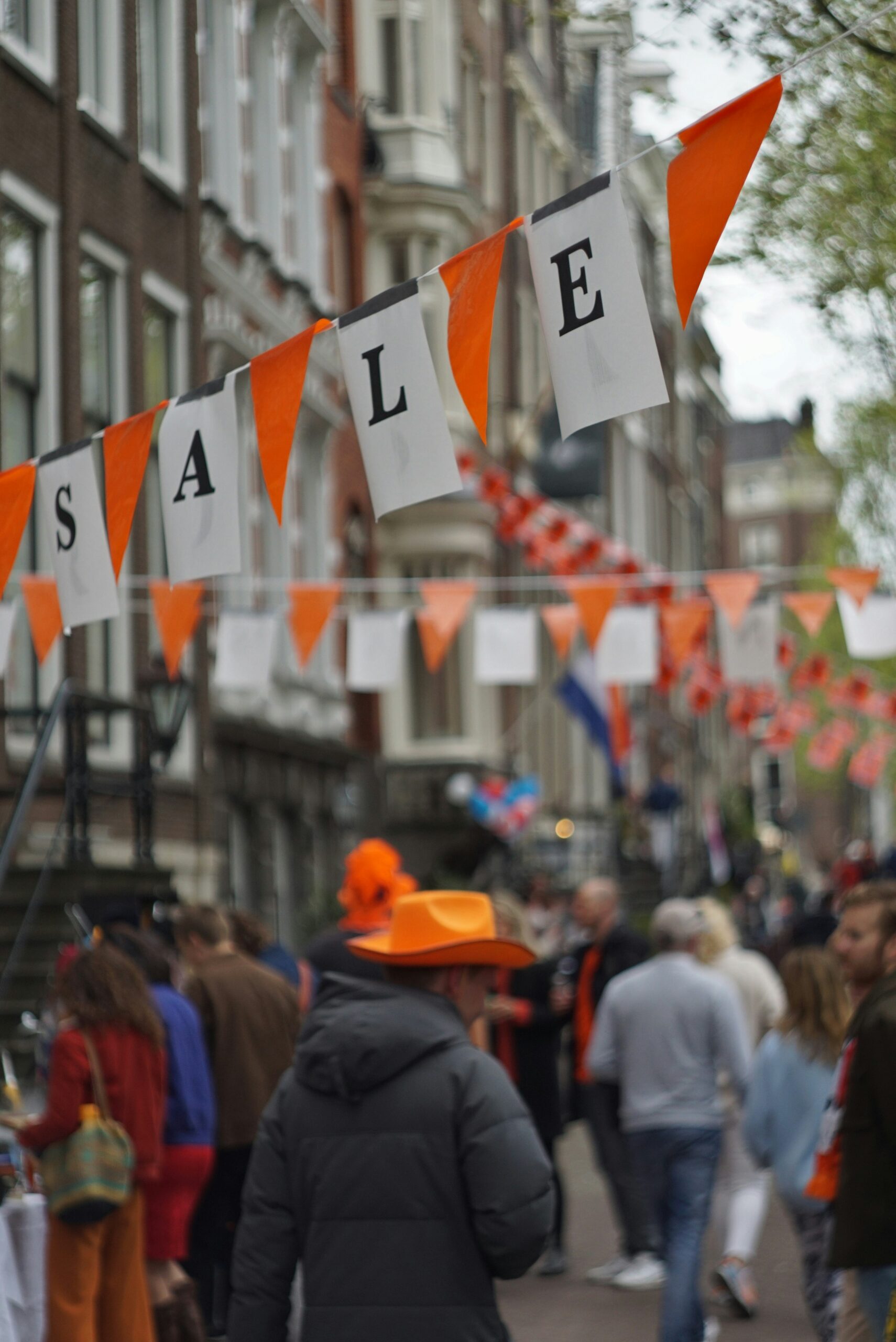
Reverse bargaining is often part of the fun, especially when children are the sellers. The buyer raises the price and refuses to buy for less, and keep raising their offer..
The best flea market in Europe
“As per the original children’s secondhand market tradition, the flea market remains a large part of the celebrations,” Frank explains. “The tradition is that every family, on King’s Day, can sell anything. This might be the secondhand stuff from the attic or from the cellar, and it is sold right outside their homes.
“I remember by midnight on the 29th ahead of Queen’s Day you used to see every little bit of street marked by duct tape, to mark ‘my spot’, then the next day you go to your spot, you put your things down and you sell the stuff. In the 90s it became fashionable to make dishes or special food like fried meatballs or French fries. It was a very crazy and fun day. Nowadays you see less selling outside houses and more focused in parks and squares, but it is still an integral tradition.
“Things today are more commercialized, but the principle is still there in the spirit of the children’s flea market. Secondhand goods, performing for the people and making money, because that is the sport. My daughter used to come home and said, “I made 20 guilders playing the flute”. For the children it is very exciting.”
Save up to $3,000* per couple on your first Premium Tour
Plus receive latest offers, travel inspiration, and discover how your travels will make a positive impact. Together, WE MAKE TRAVEL MATTER®. Subscribe NowA beautiful time of year to visit Amsterdam
“April through to the beginning of May is a beautiful time to visit Amsterdam,” says Frank. “Kings Day just tops it off. We have another great event on the 5th of May, Liberation Day, when we got liberated by the Canadians and Americans. So, combine this with the famous tulip fields being in full bloom and it is the perfect time to book a journey to the Netherlands.”
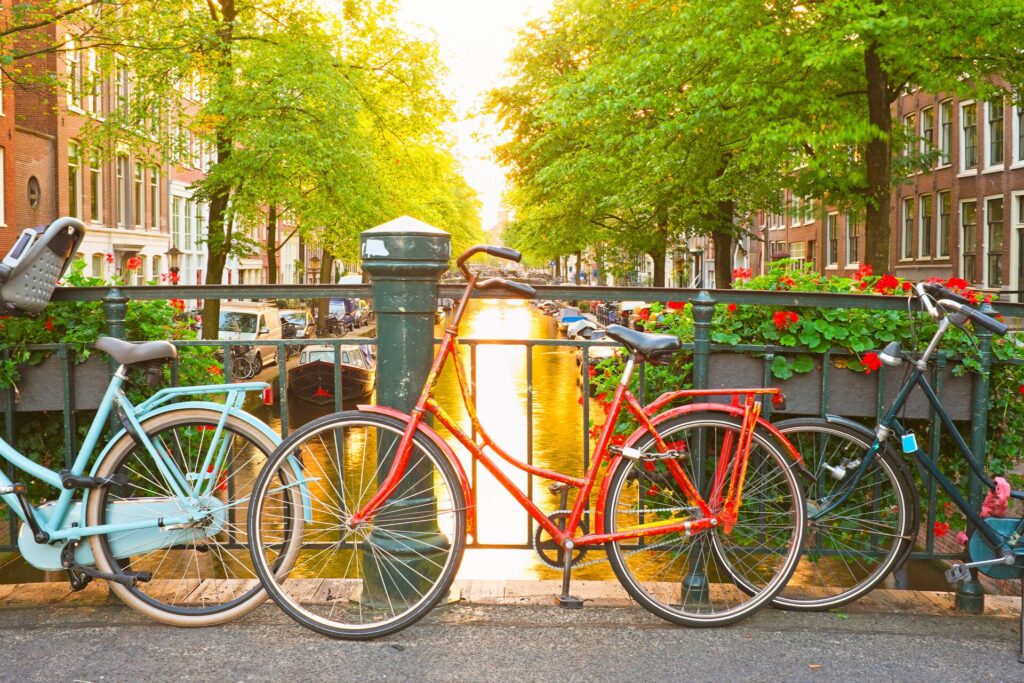
Frank’s top tips for enjoying King’s Day
Take pocket change: To be able to pay the children when they play instruments and perform, it will really make their day.
Book early (Jan/Feb) for Amsterdam: Though King’s Day is not concentrated in one spot, for the tourists and guests from abroad, Amsterdam is the main attraction. So, there could be over 750,000 extra people in and around the city that day.
Don’t take a bicycle! It is simply not possible, it’s better to walk. Just walk from square to square and let it happen.
Dress in orange: Then you will feel like a local!
King’s Day FAQs
When is King’s Day?
King’s Day is celebrated on April 27th each year.
Why is King’s Day celebrated?
King’s Day honors the birthday of King Willem-Alexander of the Netherlands. It originally celebrated Queen’s Day, which was held on the birthday of Queen Juliana, and transformed into King’s Day when Willem-Alexander ascended to the throne in 2013.
What happens in Amsterdam on King’s Day?
In Amsterdam, King’s Day transforms the city into a vibrant celebration filled with festivities. People dress in orange, the national color, and enjoy street markets, music performances and parades. The canals are often filled with boats adorned in orange décor, and there’s a lively atmosphere with parties and entertainment in parks and public spaces.
Is it worth going to Amsterdam for King’s Day?
Yes, many travelers find it worth attending King’s Day in Amsterdam due to its unique and festive atmosphere. The celebrations and the chance to see the city in a different light make it a memorable experience. However, it’s advisable to plan ahead as accommodations and transport can be busy during this popular event.
How can I enjoy King’s Day 2025?
In 2025, the King’s Day celebrations will be held on Saturday 26th April, due to King’s Day falling on a Sunday. In the city centre most cafes, terraces and free markets are open, and at 12pm free events and parties start. The main evening’s entertainment begins at 8pm featuring a huge array of artists, boat parties and festivals.
To experience Amsterdam and the Netherlands, and maybe coincide your trip with Kings Day, take a look at our collection of premium tours. Enjoy hand picked 5 and 4 star hotels, premium dining and 24/7 service from your Travel Director every step of the way.
LIKED THIS POST? SHARE WITH YOUR COMMUNITY
